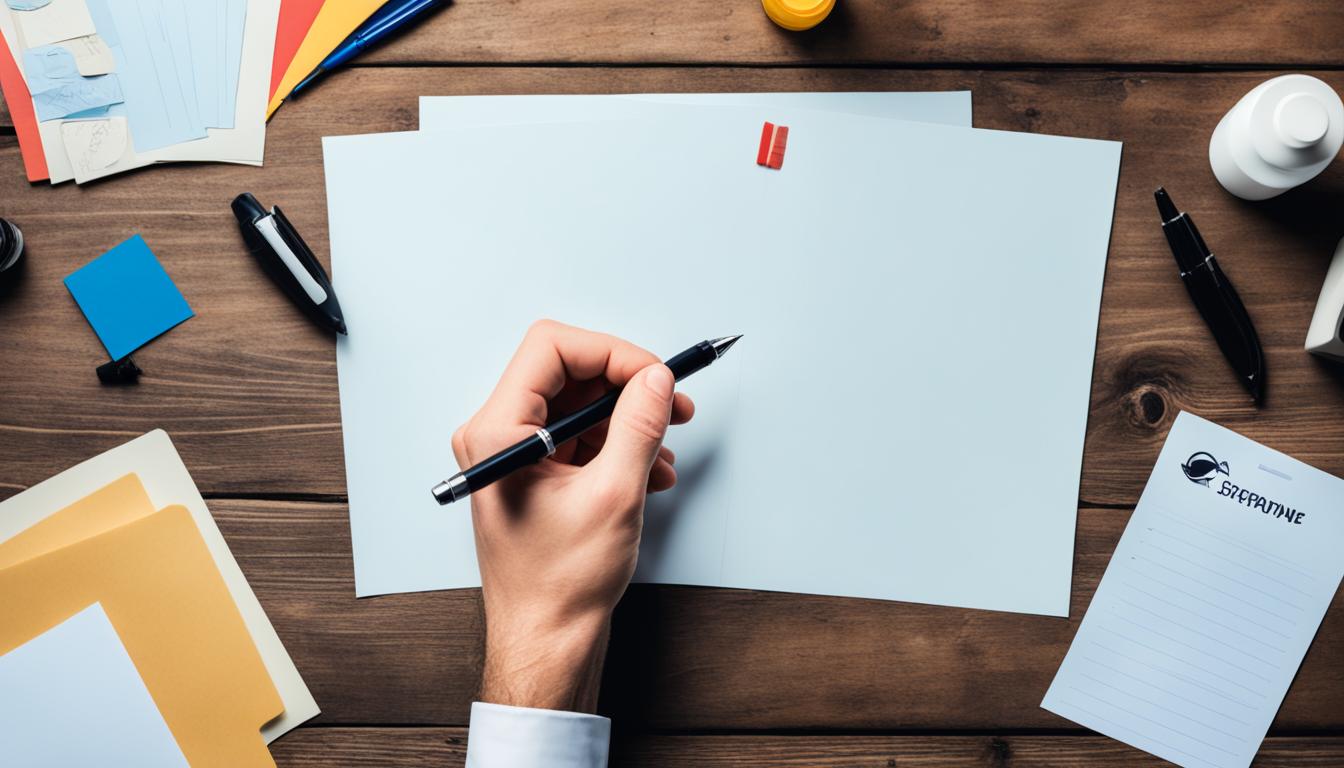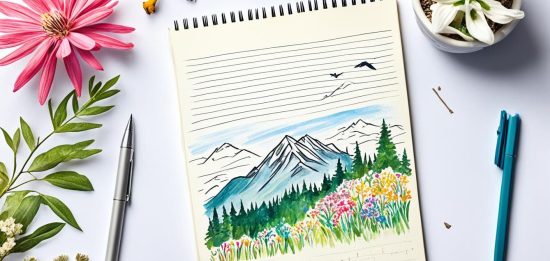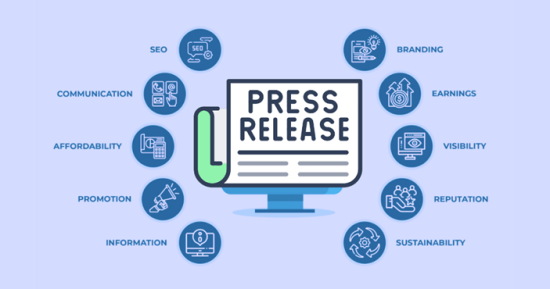
The opening of a letter is crucial as it sets the tone and engages the reader from the very beginning. But have you ever wondered what makes a good letter opener? How do you write a beginning letter that captures attention and leaves a lasting impression? Whether you’re writing a formal letter or a friendly note, mastering the art of starting a letter can make all the difference.
In this guide, we will provide you with valuable tips on how to start a letter and techniques on how to craft an effective opening for your letters. From job application cover letters to personal correspondence, we’ll cover everything you need to know to ensure your opener grabs the reader’s attention and sets the stage for a compelling letter.
So, are you ready to discover the secrets to writing captivating letter openers? Let’s dive in!
The Significance of Your Cover Letter’s Opening
The opening of a cover letter holds significant importance as it is the first impression you make on a potential employer. In job applications, first impressions matter and can greatly influence the hiring manager’s decision to continue reading your cover letter. The purpose of a strong cover letter introduction is to grab the reader’s attention, highlight your qualifications, and demonstrate your enthusiasm for the position.
The first paragraph plays a crucial role in establishing a positive impression. It should include the position and source of the job opening, express your interest and enthusiasm for the opportunity, and briefly mention a key qualification or accomplishment that aligns with the requirements of the job. A well-crafted opening paragraph sets the tone for the rest of your cover letter and increases your chances of standing out among other applicants.
First Impressions Matter in Job Applications
When applying for a job, the first impression you make on a hiring manager is crucial. It often determines whether your application will be given further consideration or dismissed. A compelling cover letter opening can capture the reader’s attention and make them eager to learn more about you.
By starting off strong and demonstrating your enthusiasm and qualifications right from the beginning, you have the opportunity to leave a lasting impression that can set you apart from other candidates. Don’t underestimate the power of a well-crafted introduction in influencing the hiring manager’s decision to continue reading your cover letter.
The Purpose of a Strong Cover Letter Introduction
A strong cover letter introduction serves multiple purposes. Firstly, it grabs the reader’s attention and piques their curiosity, making them want to read more. Secondly, it highlights your qualifications and key skills that are relevant to the position you are applying for. Thirdly, it showcases your enthusiasm and genuine interest in the company and role.
What to Include in the First Paragraph?
In the first paragraph of your cover letter, it is important to include certain key elements. Start by mentioning the position you are applying for and the source of the job opening, such as a job posting or referral. This establishes context and shows that you have done your research.
Next, express your interest and enthusiasm for the opportunity. Briefly mention why you are interested in the role and the company, demonstrating your knowledge and passion. Finally, highlight a key qualification or accomplishment that aligns with the job requirements. This gives the hiring manager a glimpse of your relevant expertise and sets the stage for the rest of your cover letter.
Understanding the Cover Letter
Before diving into writing the opening of a cover letter, it’s essential to understand the purpose and components of a cover letter. A cover letter provides an opportunity to introduce yourself, showcase your qualifications, and explain why you are the ideal candidate for the job. It complements your resume and gives you a chance to personalize your application.
In order to craft an effective cover letter, you need to have a clear understanding of its importance. A well-written cover letter can grab the attention of hiring managers and make a positive first impression. It allows you to highlight your relevant skills and experiences while demonstrating your enthusiasm for the position.
When it comes to the components of a cover letter, there are a few key elements that you should include. These include:
- Introduction: Begin by addressing the hiring manager and expressing your interest in the company and the specific position. This sets the tone for the rest of your cover letter.
- Body: Use the body of your cover letter to highlight your relevant skills, experiences, and accomplishments. Focus on how your qualifications align with the requirements of the job.
- Closing: End your cover letter with a strong closing statement that expresses your appreciation for the opportunity to apply and your enthusiasm for the position. Include your contact information and indicate your willingness to provide additional information or to schedule an interview.
How to Start a Letter with Professional Polish?
When it comes to starting a letter with professional polish, there are key considerations to keep in mind. One of the first decisions you’ll need to make is whether to take a formal language approach or a more direct and conversational tone. This choice will largely depend on the nature of the letter and your relationship with the recipient.
Using a formal language approach can convey professionalism and respect. It is suitable for formal letters, such as business correspondence or letters to senior executives. On the other hand, a direct approach can create a sense of connection and informality, which may be more appropriate for personal letters or casual professional communication.
Irrespective of the tone you choose, it is essential to pay attention to grammar and sentence structure. Grammarly, a writing assistant tool, can help you craft a polished opening by checking for spelling and grammatical errors. This invaluable tool ensures that your writing is error-free and maintains a high level of professionalism.

Ultimately, the goal of the letter’s opening is to captivate the hiring manager’s attention and entice them to continue reading. You want to create a strong first impression that showcases your enthusiasm and qualifications. By carefully selecting your language and utilizing tools like Grammarly, you can craft an opening that sparks interest and sets the tone for the rest of your letter.
Components of an Engaging Cover Letter Opener
In order to make a strong impression with your cover letter opener, it is essential to include several key components that will captivate the reader. By incorporating these elements into your opening, you can effectively grab the attention of the hiring manager and differentiate yourself from other applicants.
- Captivating Introduction: Begin your cover letter with a compelling and attention-grabbing introduction. Use an anecdote, a thought-provoking question, or a surprising statement to engage the reader right from the start.
- Clear Statement of Purpose: Clearly state the purpose of your letter and explain why you are reaching out to the company or organization. This will help the reader understand your intentions and set the tone for the rest of your letter.
- Relevant Qualifications: Highlight your relevant qualifications and experiences that make you an ideal candidate for the position. Emphasize specific skills, achievements, or experiences that align with the requirements of the role.
- Unique Value Proposition: Differentiate yourself from other applicants by showcasing your unique value proposition. Identify what sets you apart and explain how you can contribute to the company’s success.
Seven Strategies for an Impactful Cover Letter Beginning
To create an impactful cover letter beginning, there are several strategies you can consider incorporating into your opening. These strategies will help you grab the recruiter’s attention and make a lasting impression. Here are seven strategies to get you started:
Example: Relevant Accomplishment
One strategy is to highlight a relevant accomplishment that showcases your abilities and achievements. For example, you can start by mentioning a specific project you successfully completed or a milestone you reached in your previous role. This demonstrates your qualifications and immediately grabs the reader’s attention.
Example: Impressive Stats
Another strategy is to use impressive stats or quantifiable results to demonstrate your skills and expertise. For instance, you can mention the percentage increase in sales you achieved or the cost-saving measures you implemented. This allows the recruiter to see the value you can bring to their organization right from the beginning.
Example: Conveying Future Vision Contributions
You can also convey your future vision contributions to show your enthusiasm and alignment with the company’s goals. Describe how you see yourself making a positive impact and contributing to the company’s growth and success. This demonstrates your long-term commitment and passion for the role.
Crafting a Personal Letter: Tips from Emily Post
When it comes to crafting a personal letter, there are certain etiquette tips that can help ensure your message is thoughtful and well-received. One renowned expert in this field is Emily Post, whose book on etiquette provides valuable guidance on writing personal letters. To enhance your knowledge of proper letter-writing etiquette, it is recommended to get a signed copy of Emily Post’s book.
Getting a Signed Copy to Boost Etiquette Knowledge
Obtaining a signed copy of Emily Post’s book not only serves as a treasured keepsake but also offers a unique opportunity to delve into the world of proper letter-writing etiquette. With each page turned, you’ll gain invaluable insights and tips on how to convey your thoughts effectively, address sensitive subjects, and express your gratitude.
Writing Thank You Notes and Group Invitations
One of the most common scenarios for personal letters is expressing thanks or extending invitations. Emily Post’s book provides specific guidance on how to write compelling thank you notes and how to craft group invitations that showcase your thoughtfulness and create a warm and welcoming atmosphere. By following her tips, you can ensure your gratitude is conveyed sincerely and your invitations are tailored to the occasion.
Addressing Specific Circumstances in Personal Letters
Personal letters often involve addressing specific circumstances, such as expressing condolences, congratulating someone, or offering support. Emily Post’s book offers valuable advice on navigating these sensitive situations with grace and empathy. Whether you’re writing a letter of sympathy, a congratulatory message, or a note of encouragement, her insights will help you find the right words to convey your sentiments.

Letter Writing Assistance for the Visually Impaired
For individuals with visual impairments, there are letter writing tools and aids available to assist in the writing process. These tools include writing guides, Braille slates, and bump dots that provide tactile assistance. We will explore how these tools aid in achieving neat penmanship and overcoming the challenges faced by visually impaired writers.
Writing letters can be a challenge for people with visual impairments, but with the right tools and aids, it becomes easier to achieve neat and legible penmanship. One such tool is the writing guide, which helps individuals maintain proper alignment and spacing while writing. It serves as a tactile reference, allowing visually impaired writers to create well-structured letters.
Another helpful tool is the Braille slate, which enables individuals to write in Braille. The slate has raised dots that correspond to each Braille character, allowing visually impaired writers to write accurately and efficiently. Additionally, bump dots can be used to mark important points or headings in a letter, providing tactile cues for easy reference.
Tangible Tools for Letter Writing Precision
When it comes to letter writing, tangible tools can greatly enhance the precision and quality of your written communication. These tools provide assistance in maintaining neat alignment, spacing, and legibility. Whether you’re looking for tools to improve your penmanship or overcome visual impairments, there are options available to suit your needs.
Letter Writing Guide and Its Benefits
A letter writing guide is a valuable tool for achieving precise and professional-looking letters. It typically consists of a transparent or opaque template that helps you maintain consistent alignment, spacing, and margins. By placing the guide over your paper, you can ensure that each line is straight and evenly spaced, resulting in a visually appealing letter. The use of a letter writing guide not only enhances the aesthetic appeal of your letters but also ensures readability for the recipient. With this tool, you can confidently create polished and well-structured correspondence.
Braille Slate and Bump Dots for the Tactile Writer
For tactile writers, such as individuals who are visually impaired, Braille slates and bump dots are essential tools for letter writing. A Braille slate is a writing tool that allows you to emboss Braille characters onto paper. It consists of a metal or plastic slate with evenly spaced cells and accompanying styluses. By placing the slate over paper and aligning it with the cells, you can create accurate Braille or raised-dot lettering.
Bump dots, on the other hand, are tactile markers that can be applied to a variety of surfaces. These adhesive dots provide a tactile reference point, allowing tactile writers to locate specific areas on a paper or item. By utilizing Braille slates and bump dots, tactile writers can confidently write letters, ensuring their intended messages are communicated accurately.
How Tools Aid in Achieving Neat Penmanship
Using the right tools can greatly aid in achieving neat penmanship. A letter writing guide serves as a visual reference, helping you maintain alignment and spacing. By following the guide, you can ensure that your letters are well-proportioned and evenly spaced, resulting in a polished and professional appearance. Similarly, Braille slates and bump dots provide tactile assistance for tactile writers, enabling them to achieve accurate lettering. These tools empower writers to overcome the challenges posed by visual impairments and create legible and visually appealing letters.
FAQs on How to Start a Letter
How to start a letter to a friend?
Begin with a casual greeting like “Hi [Friend’s Name]” or “Dear [Friend’s Name].” Start your letter by mentioning something personal or recent that you can relate to.
How to start a letter for a job application?
Start with “Dear [Hiring Manager’s Name],” if you know it, or “Dear Hiring Committee,” if you don’t. Introduce yourself briefly and mention the position you’re applying for.
How to start a letter to a company?
Begin with “To Whom It May Concern,” if you don’t have a specific contact name, or “Dear [Company Name] Team,”. Start by stating your purpose for writing clearly.








